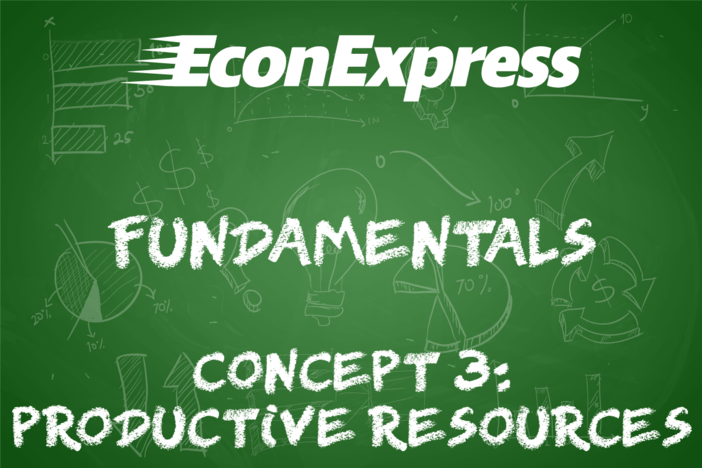Concept 9: Economic Systems
Overview: Who should decide what to do with the resources in a country? The people? The government? Both? These questions form the basis for understanding economic systems.
Learn
Beginner

All economies must answer basic questions like what goods and services to produce, how to produce these goods and services, and how to distribute the goods and services – using their scarce resources. The answers to these questions depend on the economic system that is in place.
In a pure market economy, the basic economic questions are answered by private individuals and businesses freely interacting over time. Private property is protected, and competition and negotiation are encouraged.
In a pure command economy, the basic economic questions are answered by the government, which owns the productive resources and handles distribution of goods and services.
These two descriptions represent extreme ends of a spectrum. In reality, most modern economies are mixed economies -- combinations of market and command with some cultural traditions sprinkled in as well. Nations can slide along this spectrum as different leaders are elected or different social and economic goals become important. These goals are described in Concept 10 - Economic and Social Goals.
Intermediate

The United States is often considered a market-based economy. While it is true that it is closer to the market side of the spectrum, the United States has significant amounts of government involvement in the economy. Taxes --which redistribute income -- are collected at local, state, and federal levels. The government provides billions of dollars of public goods and services like education, military protection and national parks, which are not allocated by market prices. On the other end of the spectrum, countries like Cuba and Venezuela are generally seen as command-based. Even in these countries, however, there are usually at least some businesses (restaurants, hotels, tour guides) that are privately owned. The level of economic freedom in a country can vary tremendously nationwide and within certain industries.
Advanced

To conduct a deep analysis of a nation’s economic system, there are at least five basic variables that must be considered:
- Profit motive: Are business owners allowed to keep and reinvest their profits as they see fit? In market economies profit is a key incentive. In command economies the government discourages or even prohibits private profits. Instead, fulfilling government requirements is the key incentive motivating business decisions.
- Competition: Is competition allowed and encouraged? Markets naturally encourage competition between sellers as buyers seek the lowest possible price. Command economies usually limit competition, and the government either owns production or determines which firms will produce specific goods and services.
- Private ownership: Is private property allowed and is it protected? Market economies cannot exist without private property, both physical property (like farms) and intellectual property (like patented ideas). Command economies are more focused on sharing collective resources, so there may be no private property at all.
- Consumer sovereignty: Do consumers have power to affect economic decisions? Markets are places where consumers and producers interact. Therefore, consumers have large amounts of power and send signals to producers about what to produce. In command systems, this is significantly less important as the government typically decides what will get produced, sets prices, and, in some cases, decides how much people will get.
- Government regulation: To what degree is the government placing laws and restrictions on businesses? Since there is no pure market economy in existence, all systems have some degree of regulation. Market-based economic systems usually see regulation as a form of consumer protection and try to minimize it when possible. Command economies exist largely through government regulation, so it is a primary feature of that system.

Click a reading level below or scroll down to practice this concept.
Practice
Assess
Below are five questions about this concept. Choose the one best answer for each question and be sure to read the feedback given. Click “next question” to move on when ready.
Social Studies 2024
Analyze how command, market and mixed economic systems answer the three basic economic questions (what to produce, how to produce, and for whom to produce) to prioritize various social and economic goals such as freedom, security, equity, growth, efficiency, price stability, full employment, and sustainability.














